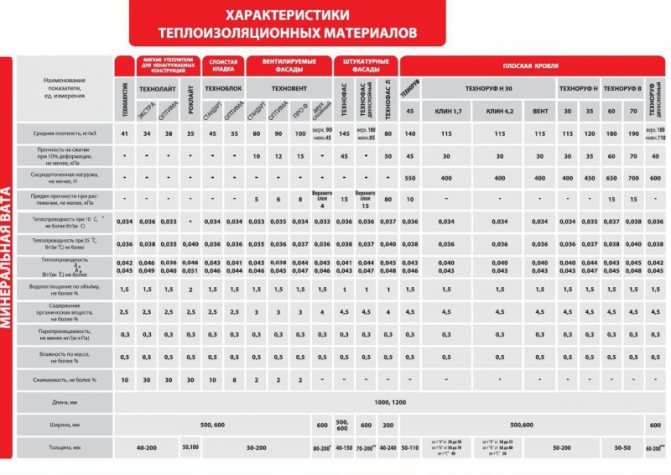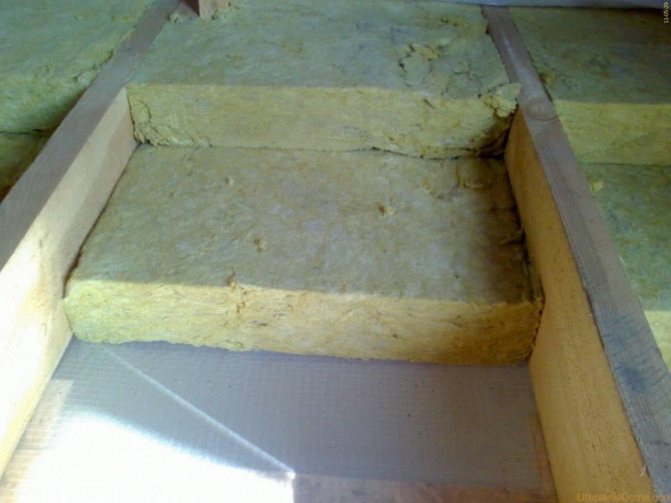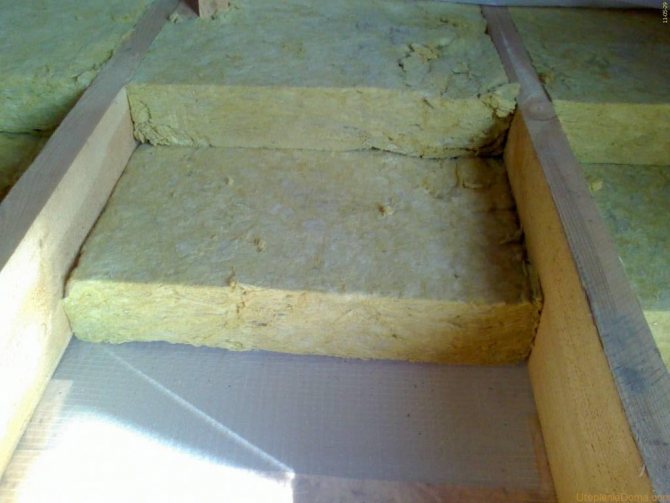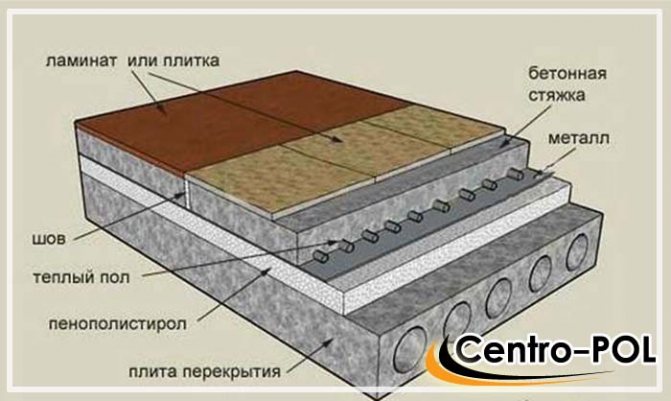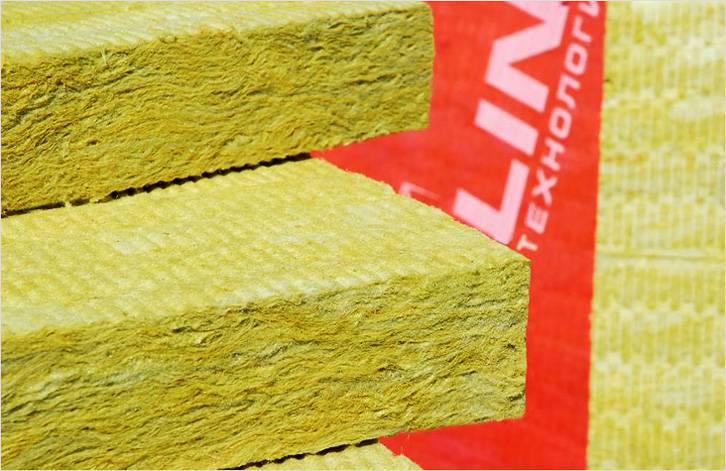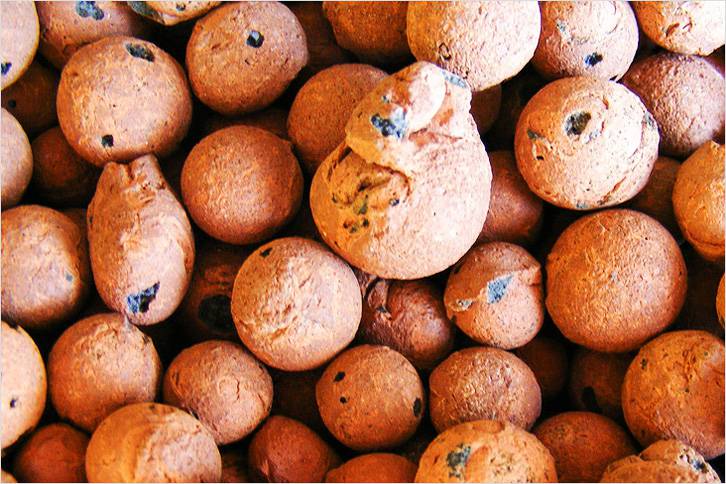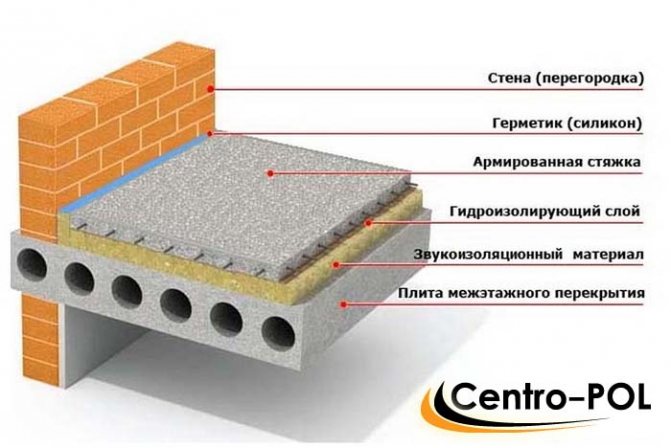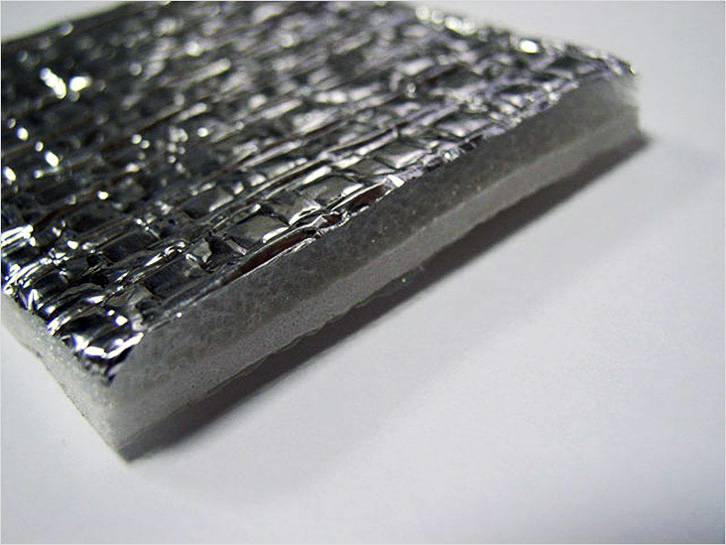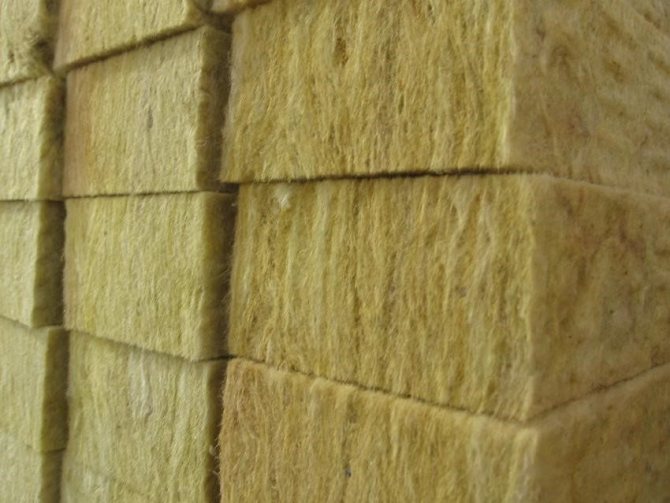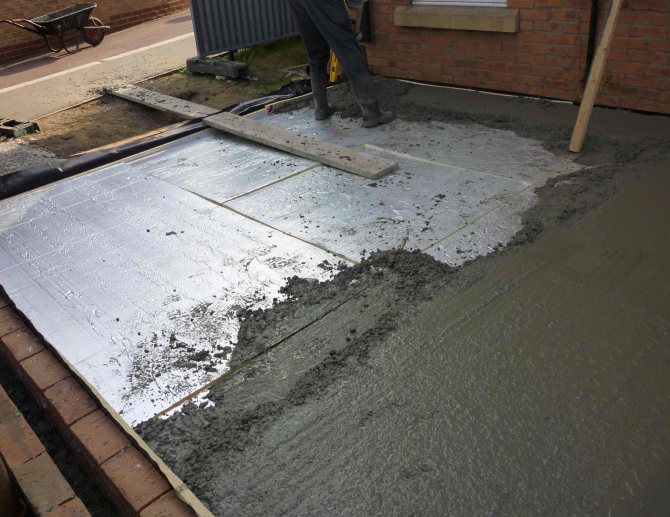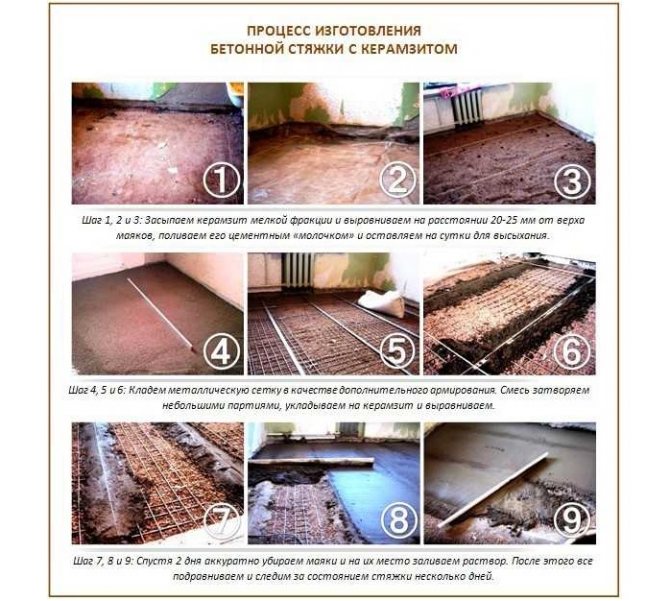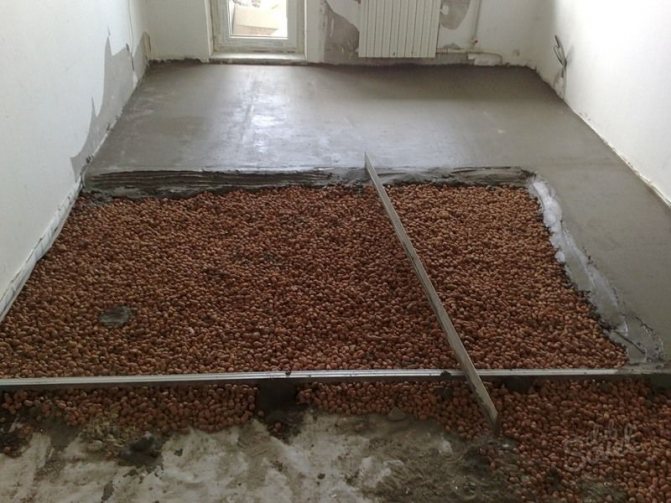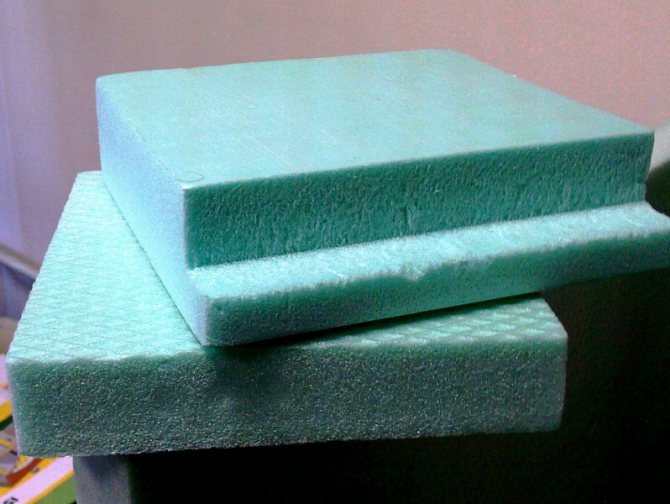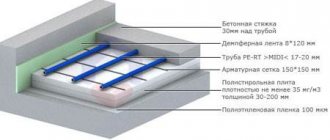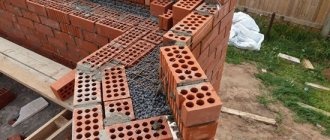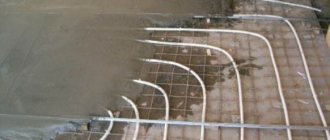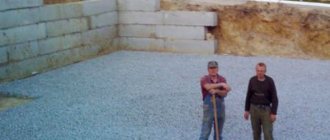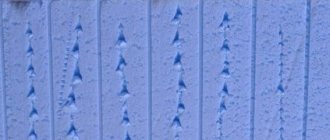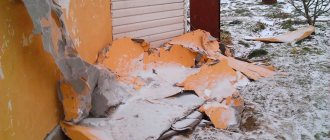Home / Landing
Back to
Published: 26.04.
Reading time: 8 min
0
1

- 1 Requirements for heaters
- 2 Features of insulation under the screed
- 3 Materials for screed insulation 3.1 Expanded clay
- 4.1 Laying
- 8.1 Pros and cons
Requirements for heaters
The scheme of insulation of a cement screed on the ground
Before using one or another version of thermal insulation, it is necessary to take into account some operational characteristics, as well as the permissibility of using the material for the screed device.
- Any type of insulation at the time of installation and during its service life must maintain the shape specified by the manufacturer.
- The material should be as environmentally friendly and safe as possible. Once fixed under the screed, it should not emit unpleasant odors.
- Good vapor permeability will ensure the release of moisture to the outside, respectively, the material will not get wet.
- The dense structure will make it possible to create a sufficient level of thermal and noise insulation.
Each of the materials has individual requirements for installation, differs in its own characteristics, which are permissible for use in a particular case.
Features of insulation under the screed
Thermal insulation of this type is considered one of the most labor-intensive, while requiring the master to have not only a theoretical base, but also practical skills. In the case of this type of concrete floor insulation, it is not enough to be able to hammer in nails or drill holes with a drill, it is necessary to be able to fill the screed perfectly evenly, focusing on the lighthouses.
First of all, it is important to choose the right insulation that will be applied under the floor screed.
There are 4 main types of screed heat insulators:
- expanded clay;
- foam granules;
- mineral wool;
- extruded polystyrene foam.
They all have their own advantages, so they deserve special attention.
Insulation for the floor on concrete under the screed: how and what to insulate in the photo
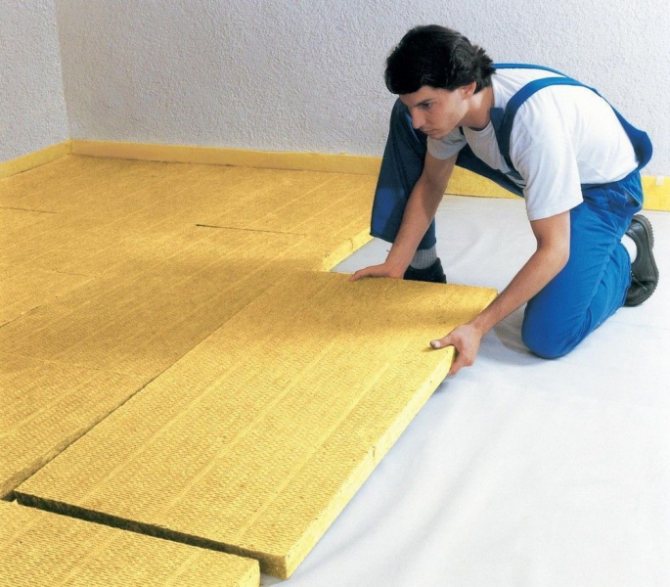

Insulation for floors on concrete under a screed is one of the most demanded materials due to the fact that it provides high-quality and effective thermal insulation, contributing to the retention of heat that concrete is not able to hold for a long time.
During construction and repair work, many consumers are thinking about how to insulate a concrete floor. They study a detailed description and technical characteristics of various heaters, choosing the highest quality. Insulation of a concrete floor guarantees effective heat retention in a residential or office space, especially if it is located on the ground floor.
Selection features
Thermal insulation of a concrete floor requires the correct choice of thermal insulation materials.


You need to pay attention to such technical characteristics as:
Due to the strong loads on the coating, the heat-insulating material should be chosen with increased strength.
The material chosen as insulation for a concrete floor must be quite durable, since it is the floor that is subjected to the highest loads, and, accordingly, the insulation for the floor under the screed will also have to withstand increased pressure.
The weight of the insulating material depends on the density, and the quality of the thermal insulation depends on the level of porosity.
High-quality floor insulation under the screed must have low moisture permeability (ability to absorb moisture) and high moisture resistance.
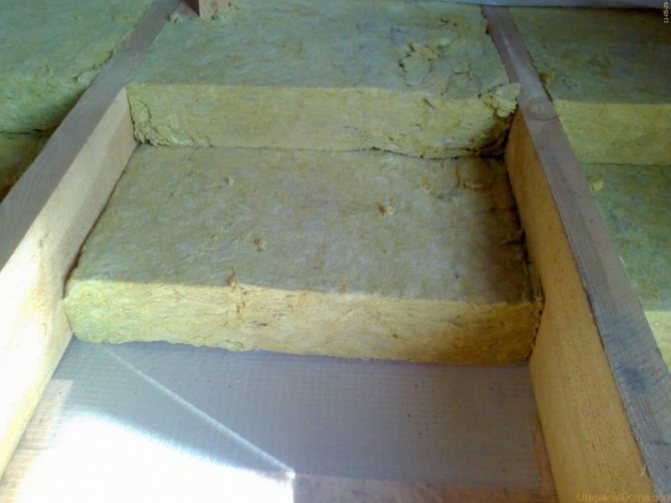

In cases where the insulation of concrete floors is performed in the living room or bedroom, office or hallway, there is no need to pay special attention to this characteristic.
Great importance is attached to the environmental friendliness of thermal insulation, especially when carrying out the described work in children's and bedrooms.
Variety of thermal insulation materials
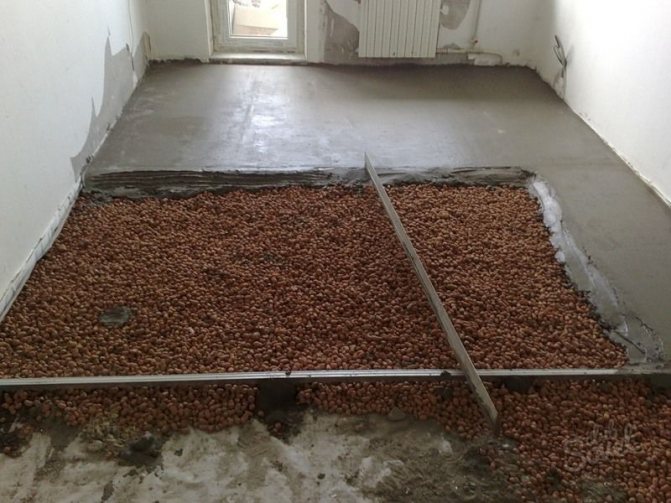

Expanded clay goes well under the rough screed
Insulation of a concrete floor is carried out in several versions. Thermal insulation should be chosen depending on which screed will be mounted on top of it. If it is a cement-sand mixture, then you will need slabs with high strength and density.
So, among the materials on the market, with the help of which the concrete floor is insulated, the following are especially popular:
Work order
All materials are laid on the surface in a specific sequence. Taking into account the peculiarities of such a material as polystyrene, you need to take care of arranging high-quality and effective waterproofing.


The first step is to take care of the preparation of the surface of the base. Concrete floors are cleaned of dirt, all cracks and cracks found are filled up with polyurethane foam or ordinary sand-cement mixture. After the applied solutions have solidified, their excess is cut off and the waterproofing is laid. For the main mistakes when insulating a screed, see this video:
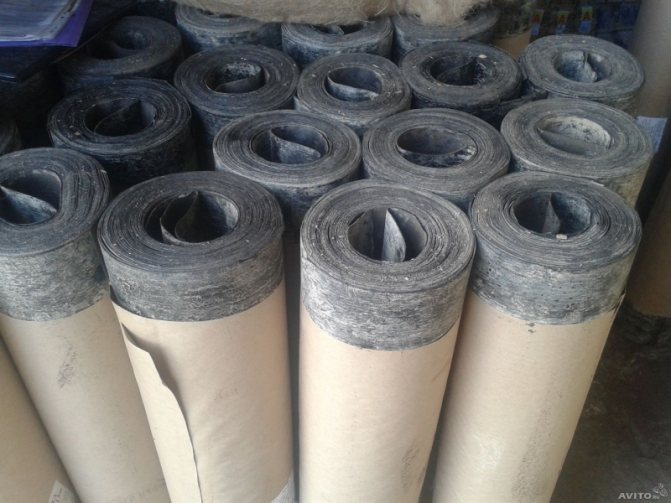

Roofing material is laid as a waterproofing layer
The first layer of waterproofing is a roll material (usually roofing felt), laid with an overlap. All seams are coated with bituminous mastic. A damper tape is glued to the walls around the entire perimeter of the room, then bars are placed on top of this layer, which will simultaneously serve as logs and beads, along which thermal insulation will be built.
The distance between them does not exceed 50 cm. Expanded polystyrene plates are laid here so that their upper edge is level with the edge of the bar.
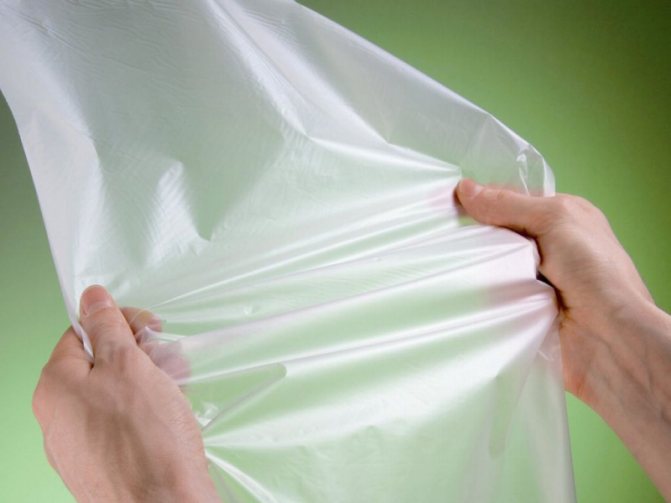

After completing the installation, you can proceed with the installation of the second layer of waterproofing.
Now they use plastic wrap for this, which, like roofing material, is overlapped, but for gluing you can use construction tape, which is highly resistant to moisture.
Pouring is performed with a mixture of cement and sand. The screed can be wet or dry. The decision is made by the owner of the house. For insulation of the concrete floor in the garage, see this video:
Taking care of the creation of high-quality thermal insulation of the concrete floor under the screed, one must not forget about the presence of full-fledged layers of the "pie" and observe the sequence in their construction. The choice of heat-insulating material depends on who will be busy with the work, but the peculiarities of the construction and the immediate room in which the insulation is carried out must be taken into account. Modern thermal insulation materials guarantee high-quality insulation and the presence of not only a vapor barrier, but also a full-fledged waterproofing.
Screed insulation materials
Insulation of the floor screed with expanded polystyrene
In order to properly organize the insulation, it is necessary to choose the appropriate raw material option.
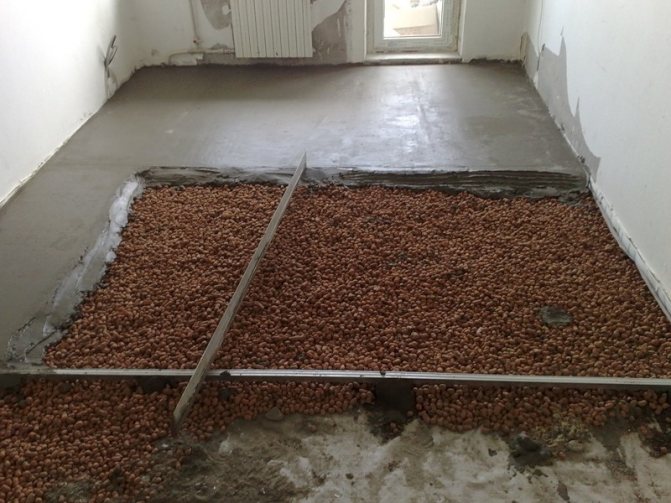

You can create an optimal level of thermal insulation at home using foam or expanded polystyrene. These materials have a relatively elastic structure. They are laid in slabs, having previously selected the desired thickness. This raw material contains 96% air, therefore it is considered natural.Thanks to this material, it is possible to minimize the heat transfer rates under the concrete screed in the house and in the apartment. The main advantage of the canvas is its versatility.
Expanded clay
Expanded clay is a loose insulation for a floor under a screed of a coarse fraction. It is based on foamed fired clay. The material is poured into specially prepared niches and evenly distributed over the surface. Initially, only this raw material was used to insulate the floor screed. The main condition when using expanded clay is the installation of waterproofing from above, since when the screed is poured, all thermal insulation turns into expanded clay concrete.
The foil fabric consists of two layers. The first plays the role of a base and substrate, the second is a reflector. Such insulation is usually based on expanded polyethylene under the screed or polystyrene. It comes in white or blue. It is laid under concrete and has good reflective properties. The product with foil retains heat well and also prevents moisture penetration.
Mineral wool is inconvenient for insulation under a screed, since it is difficult to properly lay it and isolate it from moisture
This insulation under the screed is considered inconvenient for installation on concrete floor slabs. It is quite difficult to properly lay it and isolate it from moisture. Raw materials require special surface preparation, in particular, laying a vapor barrier film. A special waterproofing material is also laid on top of the insulation before pouring the concrete. If this is not done, the interior equipment of the floor will not fulfill its function.
They are a kind of foam. You can fix the insulation on the floor under the screed using special glue or cement mortar. It is also allowed to make a floating insulation cushion. This material has good deformation resistance and excellent moisture resistance.
We invite you to familiarize yourself with Lavender chemical composition
Features of insulation under a screed on a wooden floor
It might be interesting
Thermal insulation
Distinctive features and variety of ceiling tiles ...
Thermal insulation
How to insulate the ceiling in a wooden house?
Thermal insulation
What is a heating cable?
Thermal insulation
Warm "pie" for a metal chimney
It is necessary to distinguish between two types of such work. The first option involves laying the screed on an already finished floor, with an exposed level and sufficient strength of the base. In the second case, the amount of work involves the construction of a wooden base, on which the floor screed with foam will subsequently lay. The process is laborious and requires strict adherence to the rules. The flooring must be strictly horizontal.
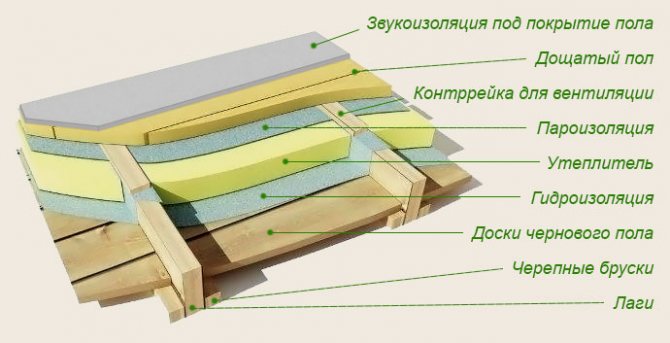

Wood, in contrast to concrete, has a high shrinkage coefficient and a tendency to significant change in size during natural fluctuations in humidity. To qualitatively insulate the floor it is necessary to qualitatively isolate the base from the screed.
Reinforcement for floor insulation under a screed on a wooden base must be reinforced. The thickness of the concrete mix is at least 50 mm. This will be enough to create a single durable layer, identical to the floor slab, with sufficient mass for a snug fit and excluding the effect of dimensional vibrations of the tree on the screed material.
Expanded clay
As a refractory eco-friendly material, granules of which have porosity, expanded clay is considered brittle, and when laying it requires extra care.
It is obtained with the help of clay swelling and is used in the insulation of residential buildings and industrial buildings as a heat and sound insulator.
Expanded clay consists of granules of different sizes, depending on which expanded clay gravel, sand, crushed stone are separated by fractions. The ideal option is when the granules are mixed and non-uniform in size: this will avoid the "failure" of the floor.
After laying, the material should be well tamped.
Styling
Based on the fact that the maximum load is on the floor surface, it is very important to choose the right thickness of the insulation. This is done so that after a while the insulator does not deform or sag along with the floor covering. In the case of expanded clay, for effective insulation, the layer must be at least 15 cm.
Laying steps:
- First, a layer of waterproofing is put, and only on top of it is a heat-insulating material.
- Then beacons should be set up, which will ensure the perfect evenness of the concrete placement. The first beacon should be installed at a distance of about 20 cm from the wall, then set evenly and parallel to each other, depending on the size of the floor.
- After that, a fixation layer is laid, consisting of cement mixed with water. The solution must fill all voids in order to expel air.
- This is followed by a direct screed with a mortar from a mixture of sand with concrete, and the more the latter is in the composition, the harder the mixture. Typically, a ratio of 60% cement and 40% sand is used. The solution is poured over expanded clay, and then evenly spread with a spatula, leaving to dry.
Using expanded clay under the floor screed
Expanded clay has a number of positive properties - fire resistance, environmental friendliness, relatively low weight. The material is quite fragile, therefore, care and accuracy are required when filling under a future screed. Broken granules lose their thermal insulation properties.
In rooms with low ceilings, the use of expanded clay cushion will increase the field level by at least 15 centimeters.
A lesser thickness of expanded clay will not give sufficient strength characteristics of the floor. In addition, expanded clay should be protected with water repellents or special materials for waterproofing - the material absorbs moisture well. You will need to perform reinforcement on a layer of expanded clay insulation before laying the screed. The advantages of expanded clay include a low price.


Rough screed waterproofing
Waterproofing with bituminous cloth
Rough screed is found mainly in their own homes. It is the pouring of concrete directly onto the ground. Also, this design is optimal for arranging a yard or garage structure.
After the stage of filling the screed, waterproofing should be performed in order to completely eliminate the formation of condensation from the soil. It is mounted using special roll insulators - usually a bituminous sheet or membrane films.
The insulating layer must be applied to adjacent walls approximately 10-15 cm. To remove the excess layer, sanding the surface must be performed.
If it is not possible to lay the waterproofing material on the ground in front of the concrete screed, first fill in a small layer of the monolith. After solidification, a layer of bituminous material or roofing material is applied.
Floor insulation on the ground
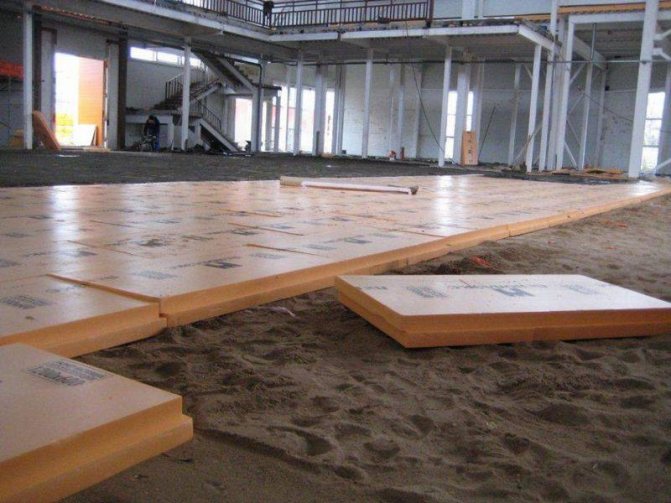

Sometimes in construction, floors are made directly on the ground. Then they just need to be insulated. The order of work is as follows:
- the soil is rammed, a layer of gravel is poured onto it, crushed stone 10-15 cm thick, it is rammed again;
- the next layer - sand of the same thickness, rammed;
- screed with concrete, you can lay a reinforcing frame for strengthening;
- when the screed is dry, you can start warming;
- a polyethylene film is pre-laid so that moisture does not seep through the entire thermal insulation;
- a heater is laid down, a waterproofing material (glassine, roofing felt) is mounted on it;
- a wooden or concrete base of the floor is created. For a concrete floor, a metal mesh must be laid on top of the roofing material, and then the solution is poured.
Styrofoam granules
When using this method of floor insulation, there is no need to lay the base surface under the material.This insulator is considered the lightest, and also capable of not repeating the unevenness of the surface, therefore it is indispensable when screed into uneven floors.
We invite you to familiarize yourself with Properties and methods of application of cocoa powder
Basically, foam granules (polytherm) are used as an additive to a solution that also consists of water, coarse sand, cement, fiberglass and plasticizers.
The lightness of the material is due to the low density of the granules. This type of screed is ideal for insulating attics, roofs, basements and floors of the first floors of houses. In this case, the foam should have a thickness of about 50 cm, and if it is used as interfloor sound insulation, then first a layer with a thickness of about 60 cm is poured, and then a semi-dry screed is laid on top.
After filling the screed with a solution, it is leveled, dried, and then sanded.
Household communications, water heated floors, as well as electrical wiring placed inside the corrugation are ideally placed in the polytherm.
Options for floor insulation under the screed
In the basement level, thermal insulation is made from materials that are not subject to moisture absorption
There are several options for installing insulation under a concrete screed. Each of them is applied in individual cases.
- Floor slab. In such designs, it is advisable to use a standard film, which is laid in two layers. This makes it possible to achieve an insulation thickness of 300 microns. Fused bitumen is also used. However, it is not very practical, as it retains all the unevenness of the concrete screed.
- In the basement level. There is usually a basement, garage or cellar under the floor slab. In this case, thermal insulation is made from materials that are not subject to moisture absorption (styrene foam, polystyrene and others).
- Between floors. To prevent heat loss in apartments during the heating season, thermal insulation is performed between floors in layers of concrete screed. For such structures, expanded clay, basalt wool or expanded polystyrene are considered the best options.
There are several options for floor insulation. In fact, if you delve into the nuances, there are as many as there are masters. But there are so-called technological skeletons, from which it is impossible to move away with all the desire. This is an algorithm, a sequence of actions and general rules for the selection and use of materials.
The process of floor insulation also has such skeletons, and everything here depends on the type of material for insulation:
- Mineral wool is laid on a ready-made concrete screed, which must be even without flaws. For this, a special box is assembled, it is divided into compartments, compartments, where the insulation is placed. From above it is sewn up with wooden plates. The same method of insulation is used for expanded clay;
- In the case of using foam, Penoplex, the material is laid on a rough screed. Topcoat layers are applied on top. In this case, the insulating effect can be enhanced by using a foil film.
- The expanded clay pillow can be filled with cement or the material is added to the solution. In the first case, it is necessary to pour the insulation with cement milk. This will ensure a better solidification of the solution.
We suggest that you familiarize yourself with Drip irrigation for indoor plants with your own hands
When laying sheet materials, it is necessary to leave a small gap between the insulation and the wall. This is done with a damper tape. The gap is necessary for the unhindered expansion of materials with temperature differences.
Helpful article? Bookmark it!
Insulation of the floor of the first floor


- Floor insulation on concrete.When the floors are insulated not above the basement, several materials are used at once and the base is prepared: you need to raise the finishing floor and look at the concrete slabs where there are cracks and chips;
- all defects are sealed with concrete mortar;
- when it hardens, the surface is treated with a strengthening impregnation;
- the next important part is waterproofing. It can be a plastic wrap or a water-repellent primer. In both cases, a layer of 15-20 cm is laid on the walls too;
- in an apartment where there is little space, the logs can be mounted directly on the waterproofing, and in the house it is recommended to raise the crate by 5-7 cm (roofing material is laid under the beams of 5x5x15 cm);
- logs fall on the beams, and everything is attached to the base of the floor;
- A 12-15 cm layer is filled with bulk insulation;
- then mineral wool slabs follow (roll can also be used). In addition to cotton wool, foam or penoizol is used;
- It is recommended to lay the insulation below the lag, on top of the mineral wool it is covered with a vapor barrier film (attached with staples);
- In the last turn, the subfloor (plywood or plank) is laid.
- the old floor is torn down, the lags are examined and, if necessary, replaced by new ones;
(no votes yet)
Mineral wool
Mineral wool is considered a common material for thermal insulation: affordable, but quite effective. It is mainly used to insulate attic rooms or floors of the 1st floor.
Mineral wool consists of thin fibers and can be corrugated, spatial, horizontally or vertically layered and have the following substances in the main composition:
- blast furnace slag;
- volcanic rocks (basalt, stone, etc.);
- glass.
Advantages and disadvantages
The main advantages of the material are: crease resistance, good vapor permeability, frost resistance, economy, resistance to temperature changes, low biological activity (resistance to the spread of mold, fungi). In addition, mineral wool is easy to install and screed, and can also serve for many years.
However, when choosing this material, one should take into account its disadvantages in the form of a large layer height and insignificant resistance to moisture penetration. Therefore, when installing mineral fibers, it is imperative to lay a layer of waterproofing. In terms of moisture permeability, glass wool has proven itself well, but it consists of free-flowing sharp elements, which can bring some inconvenience when laying it as a heater.
Mineral wool is produced in the form of rolls, layers such as flexible mats or hard plates.
The stages of installing mineral wool are carried out in approximately the same algorithm, the nuances consist only in the form of a surface. First, the base is carefully prepared, then a waterproofing layer is laid, a heater and a vapor barrier are laid on top of it.The final stage before the screed is the final coating.
Installation tips
Leave a gap of 1-3 cm between the wall and the floor
To properly lay the insulation on the floor on the screed, you need to follow some simple guidelines. Every nuance can be decisive in the installation process.
- When screed is made, a gap of 1-3 cm should be left between the wall and the floor.
- Without waterproofing, thermal insulation for a concrete screed is not made.
- It is important to follow the sequence of work when organizing thermal insulation.
- The floor cake should have at least five layers.
Upon completion of the installation of thermal insulation for a concrete floor screed, professionals recommend additionally installing insulation reinforcement.
Extruded polystyrene foam
The priorities of materials based on expanded polystyrene are low thermal conductivity and light weight. Extruded (foamed) polystyrene creates a reliable barrier to heat loss on the treated surface, and also prevents excess moisture from penetrating inside.
Basically, the material is used to insulate floors in basements or plinths. It does not absorb groundwater at all, and if moisture does get on top of it, then the structure of expanded polystyrene, swelling, does not change.
This insulation is compatible with the underfloor heating system and any electrical equipment. Only 1 sq. m. of material is able to withstand up to 400 kg of weight. In addition, polystyrene is resistant to biological and chemical influences, immune to temperature extremes and easy to install.
It is important not to allow the material to come into contact with organic solvents, which could lead to their melting. Insulation is considered inexpensive and it is easy to work with it even for a completely inexperienced craftsman. Difficulties can arise only at the stage of pouring and leveling the concrete solution.
Laying schemes and installation features of the listed heat insulators differ depending on the quality and material of the surface.
Variety of thermal insulation materials


Expanded clay goes well under the rough screed
Insulation of a concrete floor is carried out in several versions. Thermal insulation should be chosen depending on which screed will be mounted on top of it. If it is a cement-sand mixture, then you will need slabs with high strength and density.
So, among the materials on the market, with the help of which the concrete floor is insulated, the following are especially popular:
- Mineral wool, which is characterized by light weight, low density and thermal conductivity. Another advantage is affordable and low cost. For mineral wool, moisture is a particular danger. Upon contact with moisture, the level of thermal insulation properties is significantly reduced. The design requires fastening of wooden logs, between which insulation plates are laid, and on top of them it is necessary to lay waterproofing, the laying of which is overlapped with gluing the seams with moisture-resistant construction tape.


Styrofoam is lightweight and easy to install
- If the floor is insulated with expanded clay under the screed, then this substance is backfilled to equip the rough screed, which is rightfully recognized as lightweight. Expanded clay is added to the solution for it instead of crushed stone for floor insulation. Backfilling is performed with a layer of at least 10 cm on the previously made waterproofing, for which bituminous mastic can be used. This layer can be leveled with a vibrating screed, and a reinforcing mesh is laid on top of it, the thickness of the rod in which is 5 mm. Now comes the turn of the construction of a rough reinforcing screed. Before insulating the floor with expanded clay, it is necessary to mark the level on the walls in the house using a level construction device. A damper tape is glued to the walls around the perimeter of the room. The rough screed gains strength for at least 7 days, after which you can start pouring the standard screed.Such insulation is carried out on the ground, but concrete floors are also insulated in this way.
- Warming the floor with expanded polystyrene under the screed is one of the most demanded and popular methods. Polyfoam is quite affordable, lightweight and easy to handle and install. It is used in the course of floor insulation under the screed on the ground. This is work from the side of warm air or the case when the ceiling remains below, and on top of it, thermal insulation is arranged under the screed.
